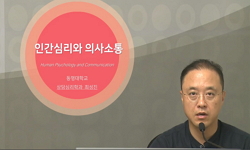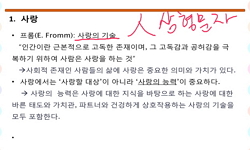The purpose of this study is to help develop our understanding of foster children's mental and social characteristics through comparison with family-reared children. The subjects of this study were 60 children aged from five to eight: 30 of whom were ...
http://chineseinput.net/에서 pinyin(병음)방식으로 중국어를 변환할 수 있습니다.
변환된 중국어를 복사하여 사용하시면 됩니다.
- 中文 을 입력하시려면 zhongwen을 입력하시고 space를누르시면됩니다.
- 北京 을 입력하시려면 beijing을 입력하시고 space를 누르시면 됩니다.
https://www.riss.kr/link?id=A104581684
- 저자
- 발행기관
- 학술지명
- 권호사항
-
발행연도
2008
-
작성언어
Korean
-
주제어
Foster care ; Foster Children ; Attachment ; Attachment classification ; family-perception. ; 가정위탁 ; 위탁아동 ; 애착 ; 애착유형 ; 가족지각
-
등재정보
KCI등재
-
자료형태
학술저널
- 발행기관 URL
-
수록면
63-87(25쪽)
-
KCI 피인용횟수
3
- 제공처
- 소장기관
-
0
상세조회 -
0
다운로드
부가정보
다국어 초록 (Multilingual Abstract)
The purpose of this study is to help develop our understanding of foster children's mental and social characteristics through comparison with family-reared children. The subjects of this study were 60 children aged from five to eight: 30 of whom were in foster care arranged by the Family Foster Support Center in Gyeonggi Province and the other 30 were family-reared children living in Seoul or Gyeonggi Province. The Manchester Child Attachment Story Task (Green, Stanley, & Goldwyn, 2003) was used to measure attachment classifications. The Family Drawing Checklist(FDC)(Fury, 1996) was used to measure family perception. The comparison of attachment classifications between foster children and family-reared children found that foster children exhibited less secure attachments and more insecure classification than family-reared children. No significant differences were found between secure and insecure attachment in terms of foster children's gender, foster style, foster period, and opportunities to meet with their biological parents. Regarding family perception, foster children had more negative conceptions about the notion of family than family-reared children. Male foster children showed more negative attitudes towards the notion of family than female foster children. Children who had a comparatively shorter foster period showed higher levels of negative feeling about family than children who had experienced a comparatively longer foster period. The comparison of family perception in terms of foster children' attachment classification revealed that children who exhibited secure attachments viewed the notion of family more positively, while children who exhibited insecure attachments perceived the notion of family more negatively.
참고문헌 (Reference)
1 최선남, "청소년의 우울성향과 동적가족화에 나타난 반응특성과의 관계" 2 (2): 19-35, 1995
2 양익홍, "정상유아와 정서장애유아의 운동성 가족화 검사반응의 요인분석" 서울대학교 대학원 1984
3 유은진, "자녀가 지각한 부모의 양육태도와 자녀의 성격특성,학업성적 및 지능과의 관계" 연세대학교 대학원 1987
4 김윤희, "유아의 성격과 동적가족화 반응특성 연구" 대전대학교 대학원 1998
5 유혜정, "유아의 그림검사에 나타난 자아개념에 관한 연구:인물화 검사,나무그림 검사,동작성 가족화 검사 분석을 중심으로" 성신대학교 대학원 1998
6 진미경, "애착측정 도구들에 대한 개관:시기별,영역별 애착 평가를 위한 도구들의 개관" 12 (12): 139-158, 2005
7 이경숙, "애착장애아동의 특성과 부모-아동 관계개선프로그램 개발 및 적용에 관한 연구" 이화여자대학교 1996
8 김문정, "아동이 지각한 부모양육행동과 아동의 행동문제간의 관계" 25 (25): 11-27, 2004
9 안윤일, "아동이 지각한 가족관계,대인문제 해결력과 사회적 선호도와의 관계" 가톨릭대학교 대학원 2000
10 이종희, "아동이 인지한 자신의 가족 및 가치관과 교과서에 나타난 가족 인식" 한국교원대학교 대학원 2005
1 최선남, "청소년의 우울성향과 동적가족화에 나타난 반응특성과의 관계" 2 (2): 19-35, 1995
2 양익홍, "정상유아와 정서장애유아의 운동성 가족화 검사반응의 요인분석" 서울대학교 대학원 1984
3 유은진, "자녀가 지각한 부모의 양육태도와 자녀의 성격특성,학업성적 및 지능과의 관계" 연세대학교 대학원 1987
4 김윤희, "유아의 성격과 동적가족화 반응특성 연구" 대전대학교 대학원 1998
5 유혜정, "유아의 그림검사에 나타난 자아개념에 관한 연구:인물화 검사,나무그림 검사,동작성 가족화 검사 분석을 중심으로" 성신대학교 대학원 1998
6 진미경, "애착측정 도구들에 대한 개관:시기별,영역별 애착 평가를 위한 도구들의 개관" 12 (12): 139-158, 2005
7 이경숙, "애착장애아동의 특성과 부모-아동 관계개선프로그램 개발 및 적용에 관한 연구" 이화여자대학교 1996
8 김문정, "아동이 지각한 부모양육행동과 아동의 행동문제간의 관계" 25 (25): 11-27, 2004
9 안윤일, "아동이 지각한 가족관계,대인문제 해결력과 사회적 선호도와의 관계" 가톨릭대학교 대학원 2000
10 이종희, "아동이 인지한 자신의 가족 및 가치관과 교과서에 나타난 가족 인식" 한국교원대학교 대학원 2005
11 진미경, "아동기 애착 유형에 따른 아동의 가족화 연구" 28 (28): 187-196, 2007
12 최중렬, "아동 위탁가정 유형별 양육태도에 관한 연구" 경성대학교 사회복지대학원 2005
13 이원영, "부모교육론" 교문사 1985
14 보건복지부, "보건복지통계연보"
15 이영은, "동적가족화에 나타난 가족지각과 초등학생의 자아개념" 충북대학교 대학원 2002
16 김윤숙, "동적가족화를 통한 유아의 가족지각과 사회?정서 발달" 한양대학교 대학원 2005
17 안승철, "동적가족화(KFD)에 묘사된 가족의 상호작용 및 역동성에 따른 가족응집성과 적응성의 차이" 3 (3): 55-69, 1996
18 김경둘, "동적 가족화를 통한 정신지체아와 일반아의 가족지각 특성 비교" 한국발달장애학회 5 (5): 1-14, 2001
19 오연주, "동작성 가족화를 통한 유아의 학교생활 적응도 고찰" 6 : 1-23, 1998
20 신민섭, "그림을 통한 아동의 진단과 이해" 학지사 2003
21 백성혜, "가족화에 나타난 유아의 심리적 특성에 관한 분석:취학 전 유아(7세)의 동작성 가족화(KFD)를 중심으로" 세종대학교 대학원 2003
22 신순자, "가족 응집성 및 적응성과 아동의 동작성 가족화 검사 반응간의 관계 연구" 연세대학교 교육대학원 1995
23 허남순, "가정위탁보호제도의 활성화 방안에 관한 연구" 한국아동복지학 2000
24 백순미, "가정위탁보호에 대한 의식과 활성화 방안에 관한 연구" 한남대학교 2002
25 이기정, "가정위탁보호사업의 가능성에 관한 연구" 연세대학교 대학원 1998
26 한국복지재단, "가정위탁보호사업 희망의 둥지 업무지침서" 2001
27 나승혜, "가정위탁보호 위탁부모의 복지욕구에 관한 연구" 서울시립대학교 2001
28 이송이, "가정위탁보호 양육 환경에 관한 연구" 4 (4): 43-62, 1999
29 박희천, "가정위탁보호 부모의 양육실태 및 욕구에 관한 연구" 한남대학교 2005
30 김지영, "가정위탁모의 가정위탁보호에 관한 인식 및 만족도 연구" 숙명여자대학교 2001
31 Myers,D.V, "toward an objective Evaluation Procedure for the Kinetic Family Drawings (K-F-D)" 42 : 358-365, 1978
32 Johnson-Garner, M. Y, "What Factors Contribute to the Resilience of African-American Children Within Kinship Care" 32 (32): 255-269, 2003
33 Heflinger, C. A, "Using the CBCL to determine the clinical status of children in state custody" 21 (21): 55-73, 2000
34 Cantos, L. A, "Understanding and Supporting Parent-Child Relationship during Foster Care" 76 (76): 309-330, 1996
35 Hess, P, "Together again Family reunification in foster care" Child Welfare League of America 1993
36 Fury, G, "The relation between infant attachment history and representations of relationships in school-aged family drawings" of Minnesota 1996
37 Stone, N. M, "The predictions of successful foster placement" 1 : 11-17, 1983
38 Marcus,R.F, "The Attachments of Children in Foster Care" 117 : 365-394, 1991
39 Weinstein,L, "Social schema of emotionally disturbed boy" 70 : 457-461, 1965
40 Londerville, S, "Security of attachment, compliance, and maternal training methods in the second year of life" 17 : 289-299, 1981
41 Festinger, T, "Returning to care: Discharge and reentry in foster care" Child Welfare League of America 1994
42 Walsh, J. A, "Quality care for tough kids: Studies of the maintenance of subsidized foster placements in The Casey Family Program" Child Welfare League of America 1990
43 Pilowsky,D, "Psychopathology among children placed in family foster care" 46 : 906-910, 1995
44 Vuchinich, S., "Problem-Solving Communication in Foster Families and Birthfamilies" 81 (81): 571-594, 2002
45 Gleeson,J.P, "Preparing Caseworkers for practice in Kinship foster care: the supervisor's dilemma" 14 (14): 19-34, 1996
46 O'Donnell,J.M, "Paternal Involvement in Kinship Foster Care Services in One Father and Multiple Father Families" 80 (80): 453-479, 2001
47 Ainsworth,M.D.S, "Object relations, dependency and attachment: A theoretical review of the infant-mother relationship" 40 : 969-1025, 1969
48 Green, J., "Manchester Child Attachment Story Task" University of Manchester 2003
49 Gebel,T, "Kinship Care and Non-Relative Family Foster Care: A Comparison of Caregiver Attributes and Attitudes" 75 : 5-18, 1996
50 Sims,C.H, "Kinetic family drawings and the family relations indicator" 30 : 87-88, 1974
51 Sroufe,L.A, "Infant-caregiver attachment and patterns of adaptation in preschool: The roots of maladaption and competence" 16 : 41-83, 1983
52 Fanshel, D., "Foster children in a life course perspective.New" Columbia University Press 1990
53 Schatz, M. S, "Exploring attachment to primary care givers" Colorado State University 1991
54 O'Brien, R. P, "Development of an objective scoring method for the kinetic family drawing" 38 : 156-164, 1974
55 Hamilton,C.E, "Continuity and discontinuity of attachment from infancy through adolescence. Paper presented at the biennial meeting of the Society for Research in Child Development, Indianapolis, Indiana"
56 Suess,G.J, "Consequences of early attachment experiences on competence in preschool" University Rogensburg 1987
57 Mcauley,C, "Children in Long-term Foster Care emotional and social development" Athenaeum Press 1996
58 Smith,M.C, "Child-rearing practices associated with better developmental outcomes in preschool-age foster children" 24 : 299-327, 1994
59 Dozier, M., "Attachment for infants in foster care: The role of caregiver state of mind" 72 : 1467-1477, 2001
60 Bowlby,J, "Attachment and loss:Vol.1.Attachment(2nd ed.)" Basic Books 1982
61 Russell,P.L, "Attachment and grief in foster children" Alliant International University 2002
동일학술지(권/호) 다른 논문
-
한국인의 정서적 발달과업 탐색: 정서발달에 영향을 미치는 경험을 중심으로
- 한국인간발달학회
- 황매향
- 2008
- KCI등재
-
- 한국인간발달학회
- 김예성
- 2008
- KCI등재
-
- 한국인간발달학회
- 문용린
- 2008
- KCI등재
-
아동의 동기와 플로우가 창의성에 미치는 영향: 과학영역을 중심으로
- 한국인간발달학회
- 이미나
- 2008
- KCI등재
분석정보
인용정보 인용지수 설명보기
학술지 이력
| 연월일 | 이력구분 | 이력상세 | 등재구분 |
|---|---|---|---|
| 2027 | 평가예정 | 재인증평가 신청대상 (재인증) | |
| 2021-01-01 | 평가 | 등재학술지 유지 (재인증) |  |
| 2018-01-01 | 평가 | 등재학술지 유지 (등재유지) |  |
| 2015-01-01 | 평가 | 등재학술지 유지 (등재유지) |  |
| 2011-01-01 | 평가 | 등재학술지 유지 (등재유지) |  |
| 2009-01-01 | 평가 | 등재학술지 유지 (등재유지) |  |
| 2006-01-01 | 평가 | 등재학술지 선정 (등재후보2차) |  |
| 2005-01-01 | 평가 | 등재후보 1차 PASS (등재후보1차) |  |
| 2004-01-01 | 평가 | 등재후보학술지 유지 (등재후보1차) |  |
| 2003-01-01 | 평가 | 등재후보 1차 FAIL (등재후보1차) |  |
| 2001-07-01 | 평가 | 등재후보학술지 선정 (신규평가) |  |
학술지 인용정보
| 기준연도 | WOS-KCI 통합IF(2년) | KCIF(2년) | KCIF(3년) |
|---|---|---|---|
| 2016 | 1.88 | 1.88 | 1.8 |
| KCIF(4년) | KCIF(5년) | 중심성지수(3년) | 즉시성지수 |
| 1.85 | 2.02 | 2.36 | 0.43 |




 스콜라
스콜라







